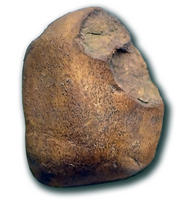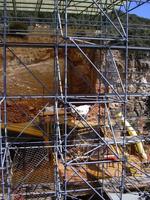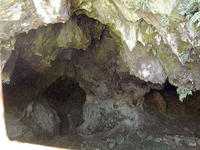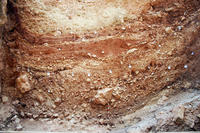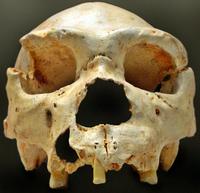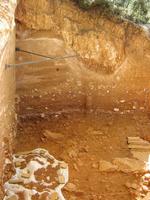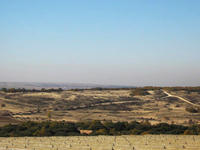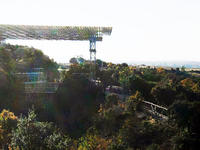You are in: Europe -> Spain -> Archaeological Site ... , and traditional search or Image Gallery will yield results of this site only
Archaeological Site of Atapuerca
| Site number: | 989 |
|
| Type of site: | Cultural | |
| Date: | 1 mill.yrs. Ago | |
| Date of Inscription: | 2000 | |
| Location: | Europe, Spain, Province of Burgos, Autonomous Community of Castile-Leon | |
Up to 75 images are shown here. Click on each for more details or on Image Gallery for more images.
| Description: | The Sierra de Atapuerca caves hold an affluent fossil trace of Europe’s earliest human beings, dating back almost one million years, and proceeding to extend up to the Common Era. The scientific study of this outstanding cache of data provides invaluable information on the subject of these remote human ancestors’ appearance and their way of life. --WHMNet paraphrase from the description at WHC Site, where additional information is available. | |
| Atapuerca is a Spanish town in the province of Burgos, Castile-Leon, that gives name to the Sierra de Atapuerca or Sierra Atapuerca, an ancient karstic region of Spain, containing several caves such as the Gran Dolina site, where fossils and stone tools of the earliest known hominids in Europe have been found. According to Jose Maria Bermudez de Castro, co-director of research at an archeological site in Atapuerca in June 2007, findings have uncovered "...anatomical evidence of the hominids that fabricated tools more than one million years ago." The excavation of several sites in the late 20th century has found human remains from a wide range of ages ranging from early humans (either Homo erectus, Homo heidelbergensis, or a more recently-identified species called Homo antecessor) to the Bronze Age and the modern man. The most famous site in Atapuerca is the "Sima de los Huesos" (The pit of bones). This site is located at the bottom of a 13 metre (50 foot) deep chimney reached by scrambling through the cave system of the Cueva Mayor. The fossils there have a minimum age of 350,000 years old, corresponding to the Middle Pleistocene. The "Sima de los huesos" contains abundant human remains representing around 30 skeletons of the species Homo heidelbergensis, a direct ancestor of the Neanderthals. The excavators suggest that the concentration of bones in the pit may represent the practice of burial by the inhabitants of the cave. A competing theory cites the lack of small bones in the assemblage and suggests that the remains were washed into the pit by natural agencies. The Bureba Pass joins the interior of the Iberian peninsula and the way to Europe. It connects the Mediterranean Ebro valley and the Atlantic Duero valley. As such, it was part of the Roman causeway and the Way of Saint James and now of the N-I and AP-1 highways. Atapuerca is also the location of the battle of Atapuerca (1054) between the troops of Ferdinand I of Castile and his brother García V of Navarre. --Wikipedia. Text is available under the Creative Commons Attribution-ShareAlike License. | ||
| Source: | http://whc.unesco.org/en/list/989 | |
| Reference: | 1. UNESCO World Heritage Center, Site Page. | |





